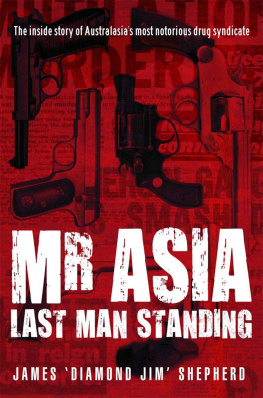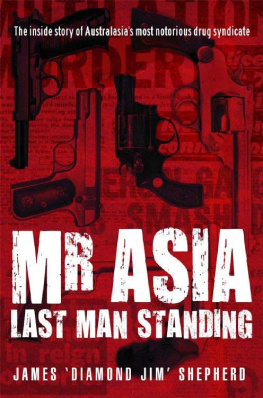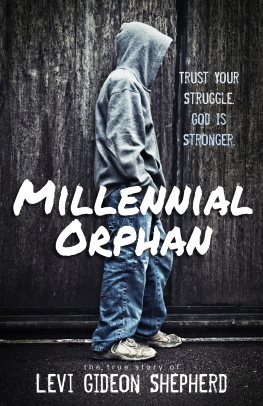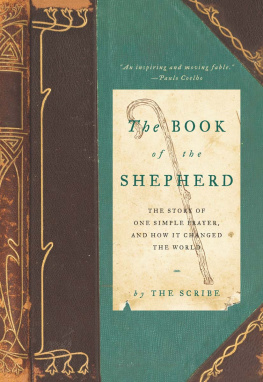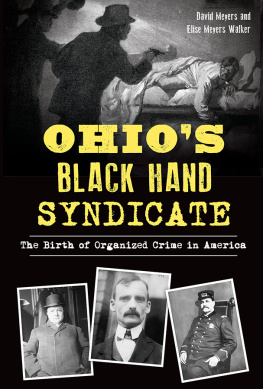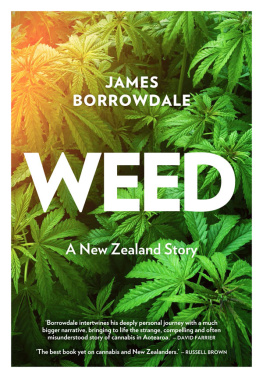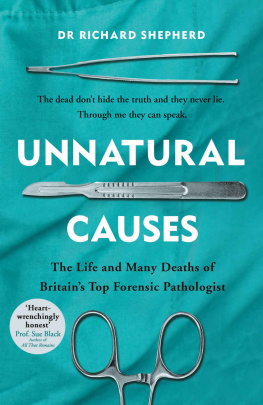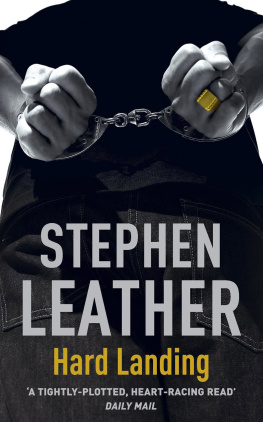ACKNOWLEDGEMENTS
O ver the years there have been many people who have helped me survive the turbulent life I have lived. Some were family, some were people who loved me and some were friends. I would therefore like to acknowledge some of those people here.
I would like to thank my elder sister Marion, my elder brother Ron, my younger sister Faye and all my nephews and nieces for their love and support. I want you all to know that your brother and uncle is finally home from the sea.
To Glenda Hughes for your friendship and gentle persistence that was the catalyst for me eventually agreeing to write this book.
Many thanks to writer Ian David for taking the time to pass on invaluable advice and encouragement to someone trying to write a book for the very first time.
To Cec McQuillan, Tim Anderson, John OHara, Duncan McFarlane, Ray Miller and big-hearted Steve Moorehouse, my thanks for your friendship.
Over the years I have been represented by some dedicated and brilliant legal people. Among them were Bill OBrien, Peter Ash and David Patch. We may not have won our High Court appeal, David, but I appreciate the long hours you and Greg James QC spent working on my case. Those sentiments go to you as well, Peter, I will never forget all the many years you tirelessly and diligently represented me on legal matters. From Croke & Associates I would like to acknowledge all the work done on my behalf by Michael Croke, Kiki Kyriakou and Maree Carey. From Chambers, the most compassionate barrister I know, April Francis, and her brilliant colleague Steven Odgers SC. For his legal advice on this book, I would also like to thank Greg Jones SC. I am forever indebted to you all.
To my agent Rick Raftos I say many thanks to you for your encouragement, advice and integrity. You have made a difficult process easy for me.
From my publisher Pan Macmillan Australia, I would like to first thank Tom Gilliatt for believing I had a story worth publishing; and secondly, my editor Joel Naoum for helping me through the demanding task of editing this book.
And finally, this book is dedicated to Cheryl, a very special lady.
CONTENTS
1
GOULBURN PRISON
O n 25 July 1986,I observed my forty-fifth birthday in the depressing surrounds of Goulburn Maximum Security Prison. This antiquated, run-down, filthy relic of a prison is located 198 kilometres south of Sydney in the town of Goulburn. This small country town straddles the Hume Highway, which runs straight through to Melbourne some 680 kilometres further south.
During the early 1800s Goulburn was a garrison town, a centre for police patrols searching out the highwaymen frequenting the area. A major stockade for convicts was based there and became a principal penal establishment well known for the harsh treatment given to convicts. The stockade housed about two hundred convicts who slept on bare boards, had one blanket each and ten men were confined to a cell. This history helps explain the prisons tough and brutal origins.
Built along the design lines of an 18th century American penitentiary, Goulburn Prison was already over a century old when I arrived there a few weeks before my 45th birthday. To give some indication of its antiquity, Australias most celebrated bushranger, Ned Kelly, was once an inmate there. The prison has a fearsome reputation and I can say without any fear of contradiction that it was, in 1986 and remains to this very day, the most violent, dangerous prison in Australia. Murders, suicides, stabbings, bashings and gang-related warfare are a way of life. During the year I was confined there, two inmates were murdered in their cells.
Unlike other prisons, Goulburn does not have a big exercise yard like those seen in most American prison films. Instead there is a series of small exercise yards, some 30 metres long by twenty metres wide behind each cellblock. All these small yards have razor wire running around the top of dank, moss-encrusted walls, minimal seating, and usually a lone, filthy toilet. Unless someone has had the misfortune to spend time in a prison, it is hard to convey or explain the sense of foreboding you feel in a hostile, dangerous environment like Goulburn Prison. It is almost as if the legions of men who have been executed, murdered or died there have imbued the prison with their rage, misery and despair at ending their lives inside its walls.
During the course of the fifteen years I spent in the NSW prison system, I was moved around all the maximum security prisons Long Bay, Parklea, Parramatta, Lithgow and Bathurst but none of them came close to the harsh, draconian atmosphere of Goulburn Prison. It is certainly not a place for the faint or weak hearted and definitely not the place anyone would want to serve a 25 year prison sentence, which was the predicament facing me on that icy cold July morning. I clearly remember that morning, even today, some 23 years later as if it were yesterday. Its funny how some memories stay vivid in your mind while others fade away. The memory of that July morning has stayed fresh in my mind and more than likely was the genesis for writing this book.
To commemorate my birthday on that bleak, wintry morning and to get out of the depressing cell where I spent a minimum twenty hours locked in every day, I had decided to go for a brisk walk in one of the small exercise yards behind B Wing, where my cell was located. Because it was so cold there was no one else willing or perhaps foolish enough to be out exercising. To help keep out the cold I was wearing a singlet, white T-shirt, prison issue green sweater, heavy green parka, long johns, two pairs of track pants, long football socks and a pair of running shoes. Despite being so well rugged up, I could not generate any warmth in my body. I guess it was a combination of the prospect of the long prison sentence and the grim surroundings of the prison that made me feel cold, depressed and forlorn, and just when I felt it could not get any worse, it started to snow! As the snowflakes fell on me, I remember looking skywards and thinking, What the fuck am I doing here?
The last time I had lived in Australia, in early 1979,I was leasing a luxury apartment overlooking Sydney Harbour in one of that citys most exclusive suburbs, Darling Point. The lawn below my apartment ran to the harbours edge, where there was a private jetty for the sole use of myself and the other apartment owners. At that time I had also acquired, through debt, a share in a top class restaurant called Tatis located in the inner-city suburb of Darlinghurst owned and run by a dapper, suave, Argentinian restaurateur by the name of Robert Fionna. A lovely man with impeccable manners, Roberts weakness was a penchant for backing losing racehorses, which is how I came to acquire a share in his restaurant. The food served at Tatis was of the highest quality. During my travels around the world I have eaten in many fine restaurants and Roberts food more than held its own in comparison. Besides the food at Tatis, beautiful and accommodating women were the order of the day as was Dom Perignon champagne, gambling at the races and bundles of cash to pay for all these pleasures.
The memories of those happier times seemed a lifetime away as the snow fell on my head that morning. The harsh reality of my situation was almost overwhelming. I was in a prison full of dangerous, miserable and despairing men, living in a grimy, barren, three-metre by two-metre cell with cardboard instead of glass to stop the elements from blowing through the window, the food was barely edible and my life was in constant danger.
How had it come to this? How had I allowed myself to become involved with a murderous outfit like the Mr Asia syndicate? A syndicate the likes of which this country had never seen before, or for that matter since. How had I allowed myself to get involved with Terry Clark, New Zealands biggest serial killer and the acknowledged head of the syndicate?

